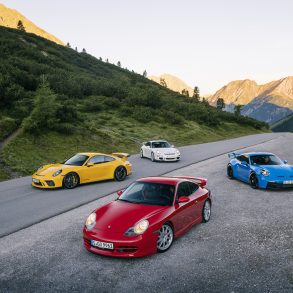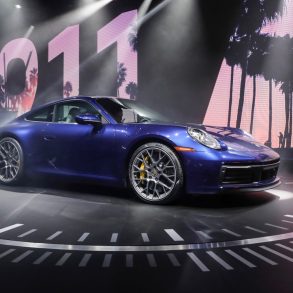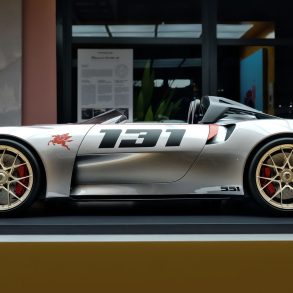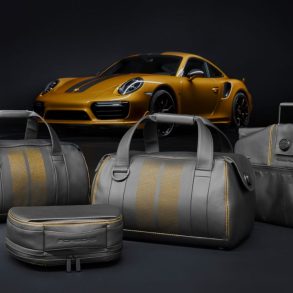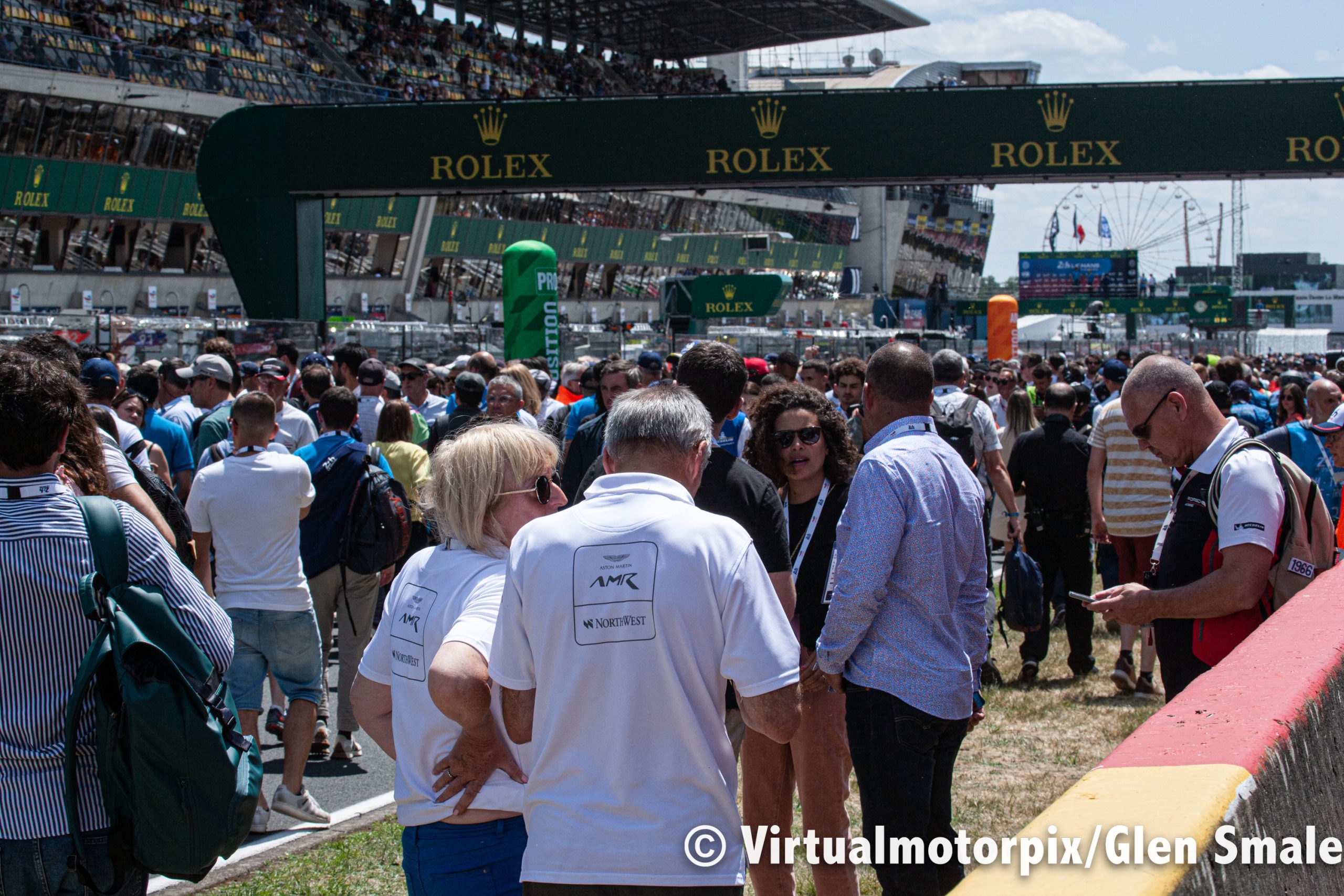
Race day dawned with a blanket of morning mist covering the area. It was a crisp morning as I departed my accommodation to the east of Le Mans at around 07h15, and making my way towards the circuit, the pockets of mist became more sporadic. Approaching the airfield which lies just to the west of the track, road traffic was still light for that time of the day. Intrepid motorsport followers were making their way back to the campsite with the obligatory French loaves tucked under their arms, while wives and friends back at the campsite were no doubt busy making the coffee and the scrambled eggs. This is Le Mans, the character of this race is like no other, as visitors to the 24 Heures du Mans, from right around the world, will go to great lengths just to attend this great endurance event. But they say you haven’t experienced Le Mans until you have camped there, and this writer can bear testament to that.
The race morning program consisted of the Ligier European Series Cup, the official Le Mans warm up (15 minutes) for the race proper, and race 2 of the Road to Le Mans cup. There were plenty of other distractions to entertain and keep the crowds busy, but in the minds of everyone there, the focus was most certainly on the race which started at 16h00.
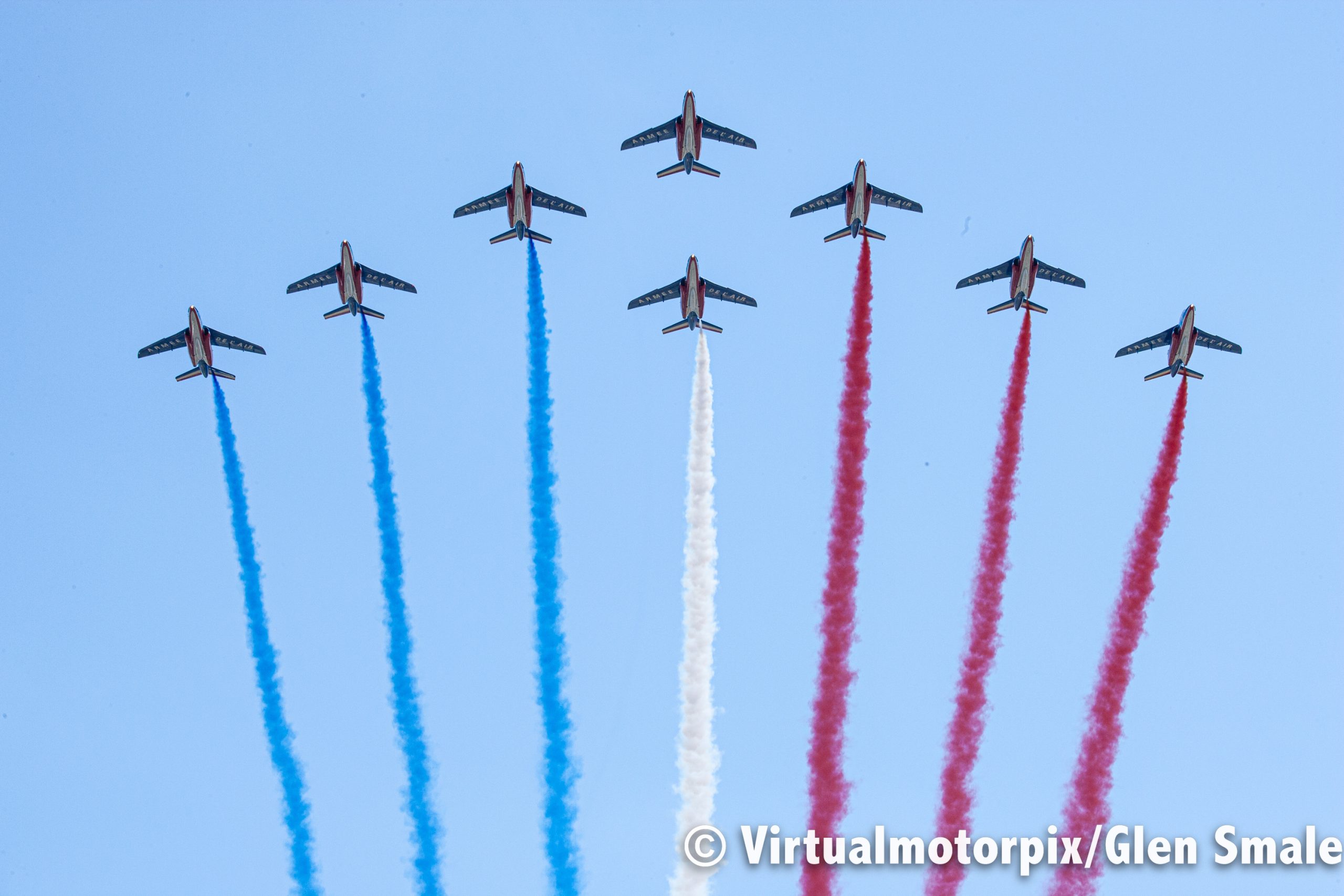
Turning to the race itself, the final entry list made for interesting reading. While everybody expected Toyota to win, it was more than just a question of which one. The top team needed to keep their cars out of trouble because the slightest mistake by one of them would see the three other Hypercars immediately capitalising on that mistake, and any of those other three cars were eminently capable of winning in Toyota’s place.
The LMP2 class, by far the largest class in the field, consisted of 27 cars that are all identically spec’ed apart from the chassis, so this was going to be a closely fought class.
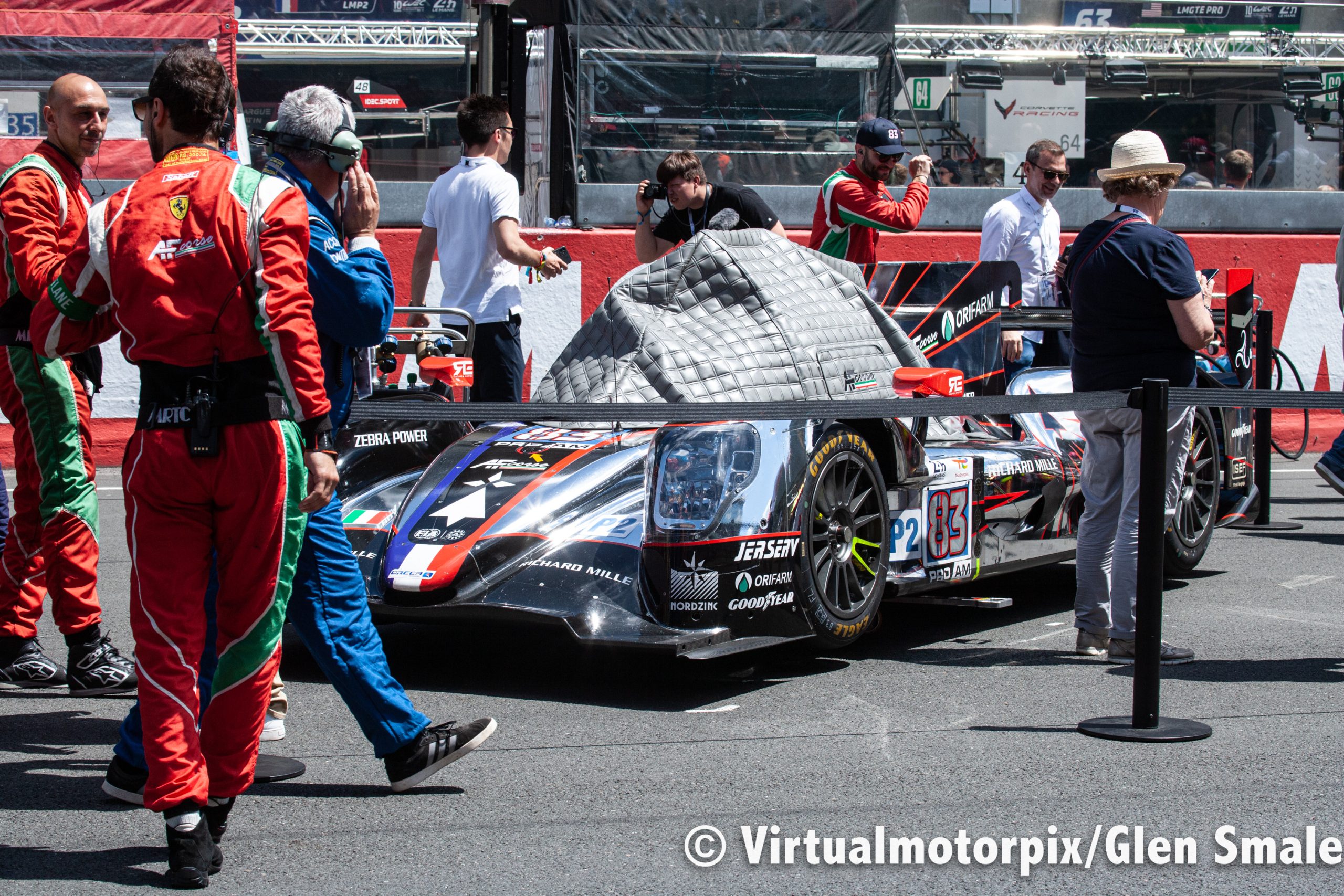
In the GTE Pro class, there were seven cars comprising two each of the Porsche 911 RSRs and Corvette C8.Rs, while Ferrari entered a pair of 488 GTE EVOs with Riley Motorsports entering a third similar Ferrari. In practice and qualifying, the Ferraris, Corvettes and Porsches all appeared to be running very smoothly, so a winner here was going to be the car that kept it clean throughout the race, and which did not suffer any mechanical maladies.
GTE Am was the second largest class consisting of 23 entries, made up of eight Porsche 911 RSR-19s, twelve Ferrari 488 GTE EVOs, and three Aston Martin Vantage AMRs. All of these cars have also been running reliably, so it was impossible to point to a winner.
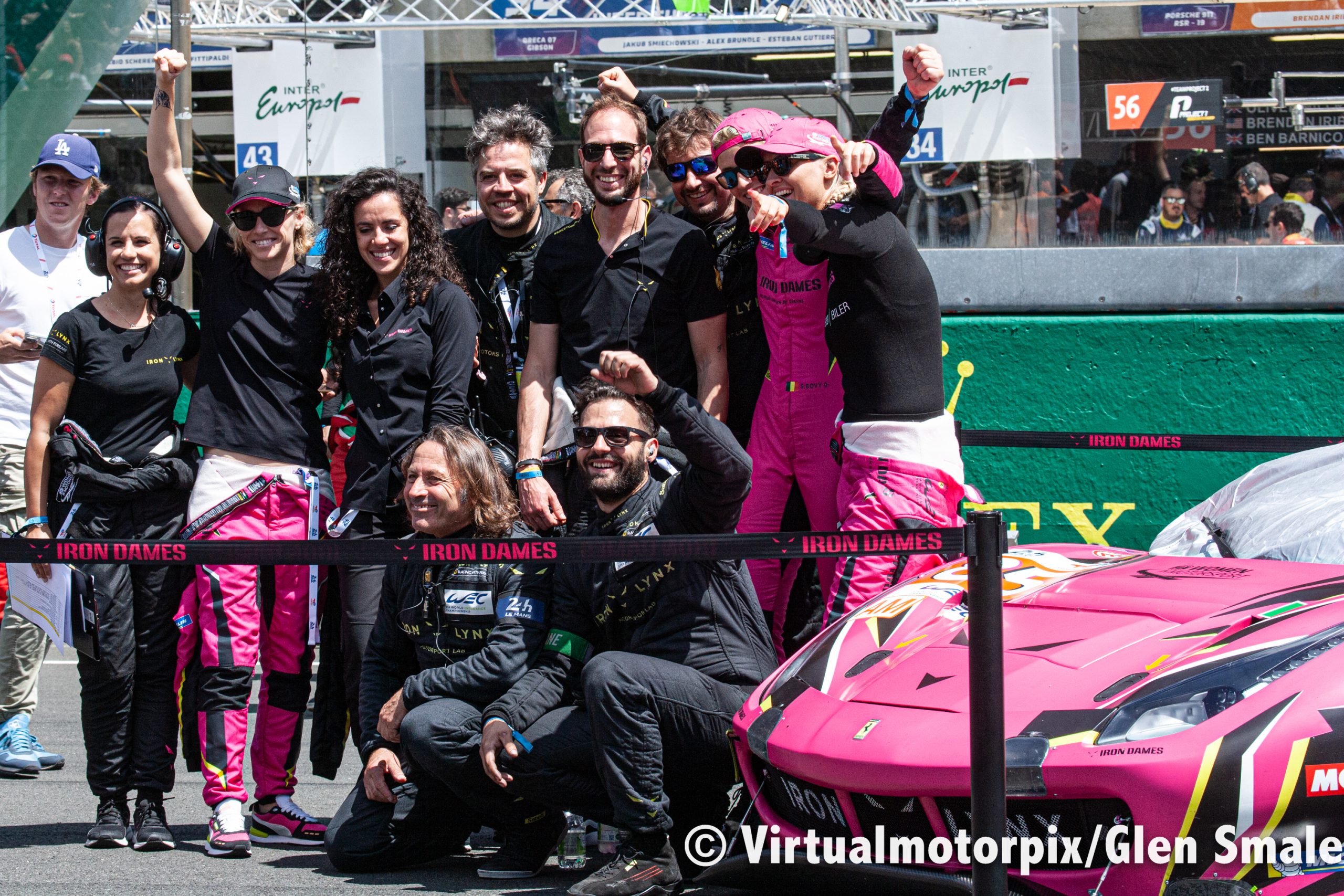
The Start of 2022 Le Mans 24 Hours
The race got underway in dramatic fashion under bright, sunny skies with a temperature of 25 degrees C, as the pole-sitting Swiss Sebastian Buemi attempted to add another victory to his tally of three wins at Le Mans. As Buemi took the No. 8 Toyota GR010 Hybrid away from pole position with his teammate alongside in the No. 7 Toyota, immediately behind were the No. 709 Glickenhaus and the No. 36 Alpine. Together with the second Glickenhaus, these five Hypercar class cars were so tightly bunched that they crossed the start line almost as one.
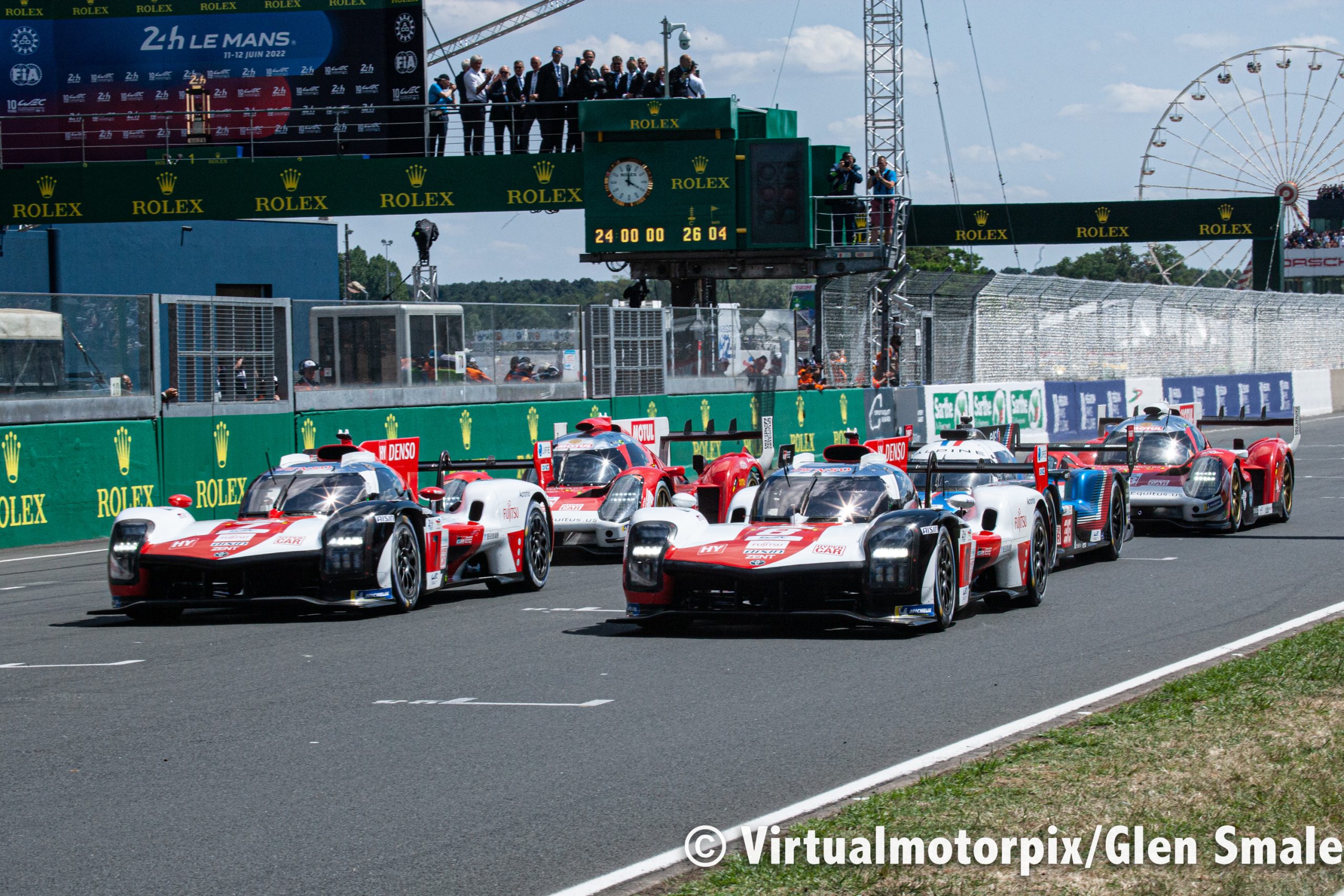
Just behind them came the LMP2 class, and before the mass of cars had completed Turn 1, the No. 22 United Autosport Oreca flew off the track to the left, and landed well up in the gravel trap. Its race was not over though, as the car was lifted unceremoniously back on the tarmac and it went on its way, the only damage being to the driver’s ego. The rest of the field got away unscathed and soon the lead cars came around again, the No. 8 Toyota leading the No. 7 sister car, followed by the two Glickenhaus cars and the Alpine. Already a slight gap was beginning to open up on lap two between the two Toyotas and the three other Hypercars. For the first three hours, it was the No. 38 JOTA car that led the LMP2 class.
In the GTE Pro class, the two Corvettes led with the two works Porsches in hot pursuit, while the two AF Corse Ferraris in fifth and sixth place sounded right on song, almost biding their time. Porsche were also running strongly in GTE Am at one point holding the top four places, but this slipped to just the top two places a short while later.
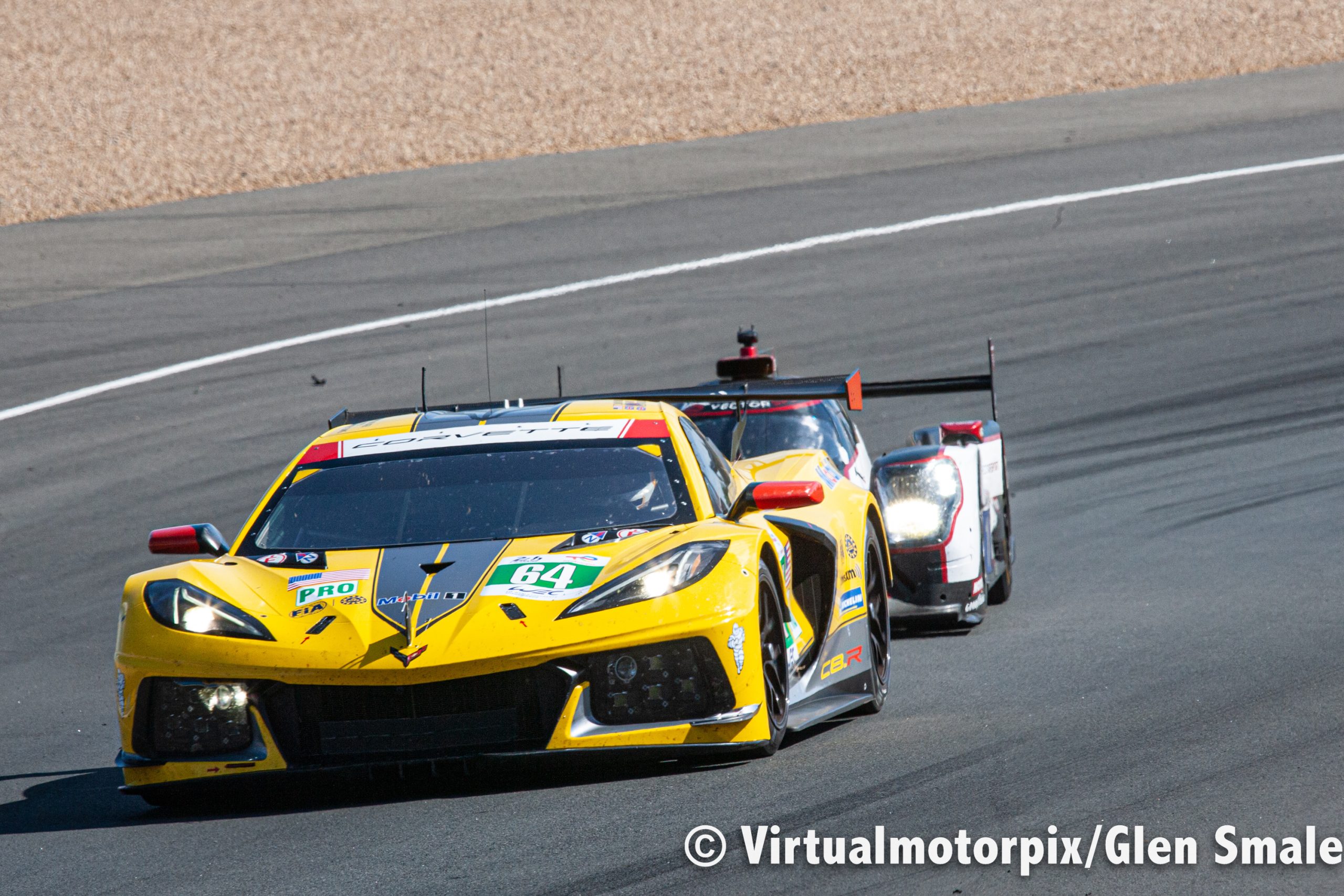
With four hours completed, it was still the two Toyotas out front (No. 8 ahead of No. 7), followed by the two Glickenhaus cars. The No. 36 Alpine car was having a torrid time and had to endure two lengthly pit stops, losing a total of around an hour, although it did eventually get back into the fray. The order was shuffled slightly in GTE Pro with the No. 63 Corvette still leading from the two works Porsches, and the No. 64 Corvette in fourth. The level of professionalism in the GTE Am class is quite staggering with, for example, Harry Tincknell sharing the No. 77 Porsche 911 RSR-19 with Christian Ried and Sebastian Priaulx (son of Andy Priaulx).
Tincknell was so successful in the Ford GT program while Christian Ried has driven in every single WEC race since its inception. Add to this list names such as Cooper MacNeil, Julien Andlauer (Porsche factory driver), Paul Dalla Lana, Nicki Thiim, Toni Vilander, Giancarlo Fisichella to mention just a few – apologies for not mentioning more, there simply isn’t the space.
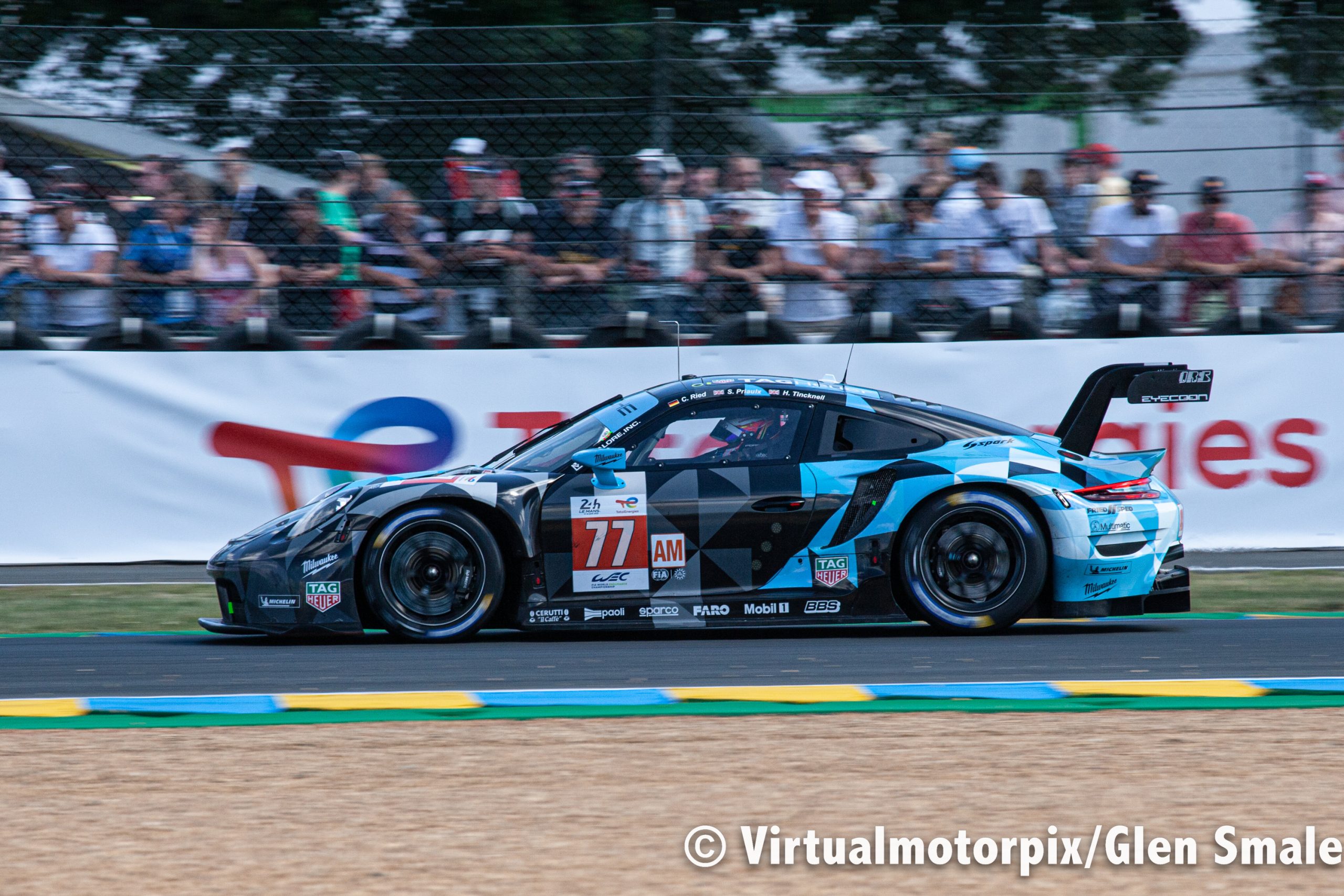
There had been a change of car at the head of the field, but it only involved a swapping of places between the No. 8 and the No. 7 Toyota, the latter slipping in front of its sister car, while the two Glickenhaus cars remained steady in third and fourth places. In the LMP2 class, the No. 38 JOTA was still leading but the No. 5 Team Penske car had moved up into second place after five hours. The No. 63 Corvette still headed the GTE Pro class at this time while the No. 79 WeatherTech Porsche was the GTE Am class leader.
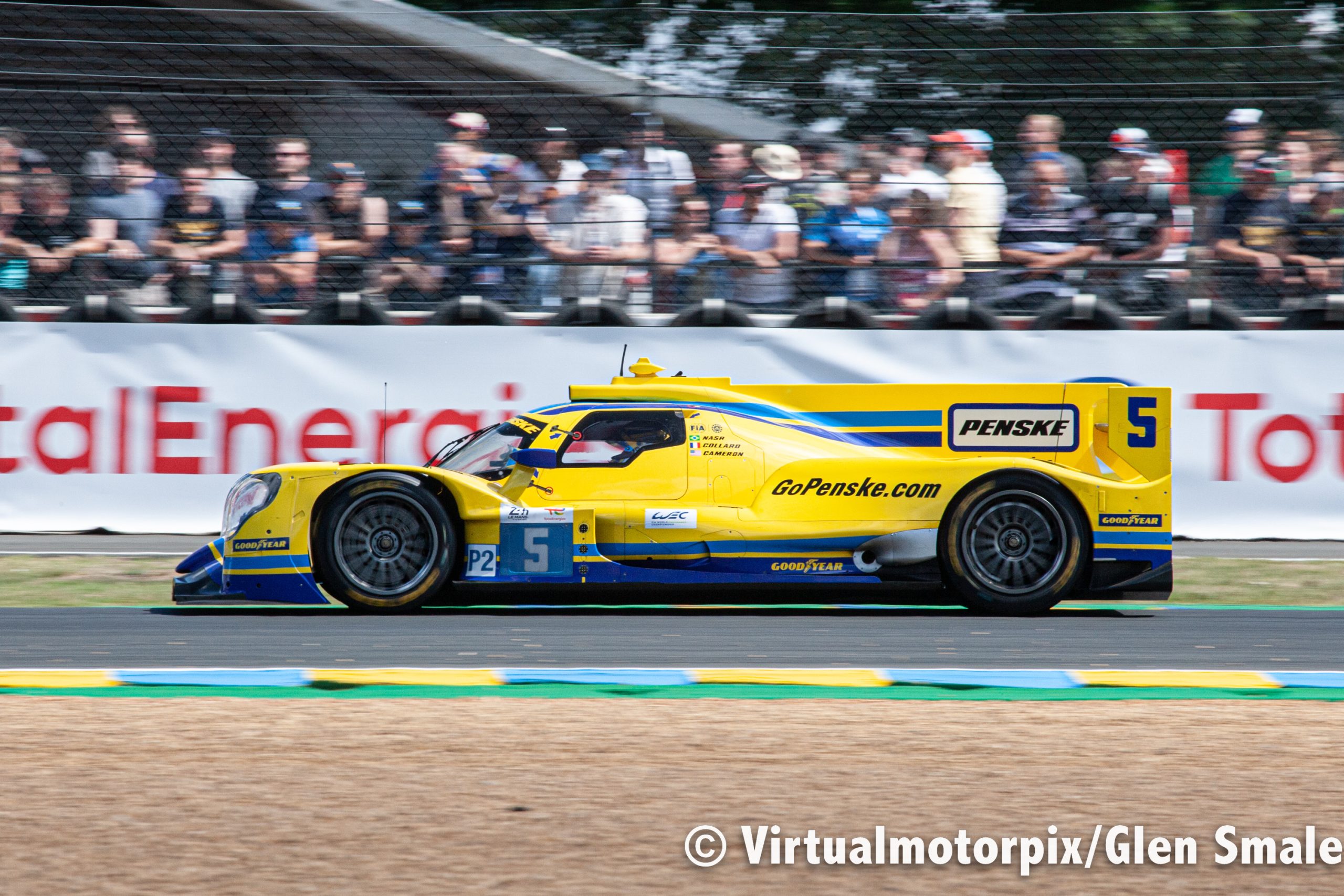
Astonishingly, after seven hours of fierce racing, there had not been a single retirement, all 62 starters were still running. At this time, the two Toyotas and the No. 708 Glickenhaus car were all still on the same lap, with the No. 709 just a lap down. Suddenly, the No. 63 Corvette was humbled by a left rear suspension failure which affected the whole corner of the car, necessitating a wing, hub and brake replacement, losing more time than they would have liked. This allowed the No. 92 Porsche into the GTE Pro class lead with the No. 91 car in second. But there was so much of the race still to run that the order was certain change many times still.
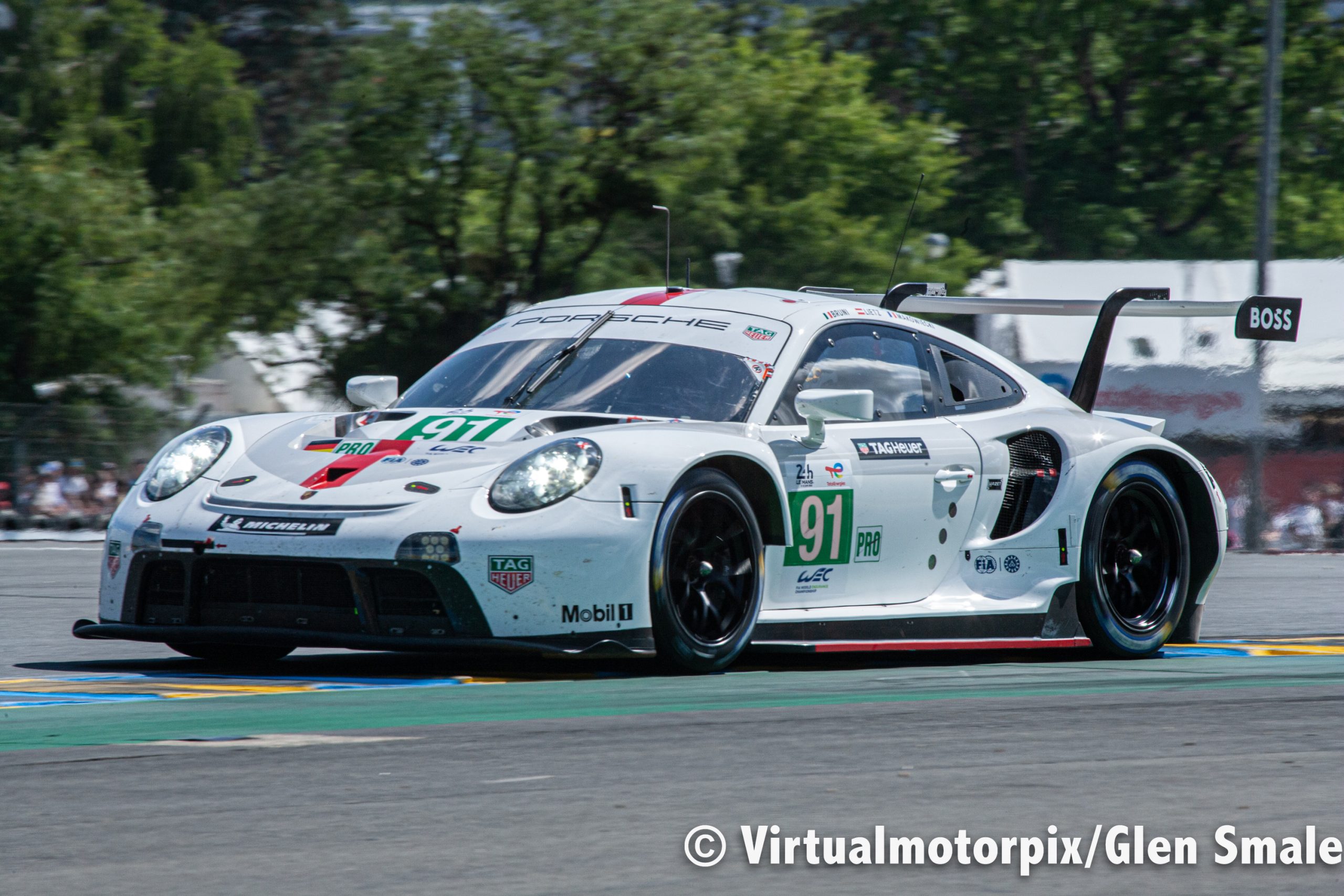
Michael Fassbender in the No. 93 Porsche was involved in an accident in practice during the week, and he was involved in an accident again in the eighth hour of the race when contact by the No. 61 AF Corse Ferrari initiated the accident earning the Ferrari team a one-minute stop/go penalty. After a slow, painful drive back to the pits, the Fassbender car was set upon by the mechanics and much pushing and kicking of bent panels was seen. While the No. 63 Corvette was being repaired, the No. 64 sister car pitted with brake failure, making it a sorry time for the team. It seemed that it was the time for incidents and repairs, as the No. 708 Glickenhaus spun at Tertre Rouge and ended up facing the wrong way in the middle of the circuit, necessitating a return to the pits and a ten minute repair.
Ben Barker in the No. 86 GR Racing Porsche set the fastest race lap for that car and for the class so far, a fast and reliable driver who is long overdue a top finish in this race. A massive effort by the team of the No. 93 Fassbender Porsche got the car back out onto the track in around ten minutes. Just after midnight, the No. 777 D’Station Aston Martin was retired with suspension failure, but at about the same time the No. 63 Corvette was sent out for an exploratory lap following its lengthly repair. As the race passed the eight hour mark at midnight, the temperature was still up at 18 degrees C.
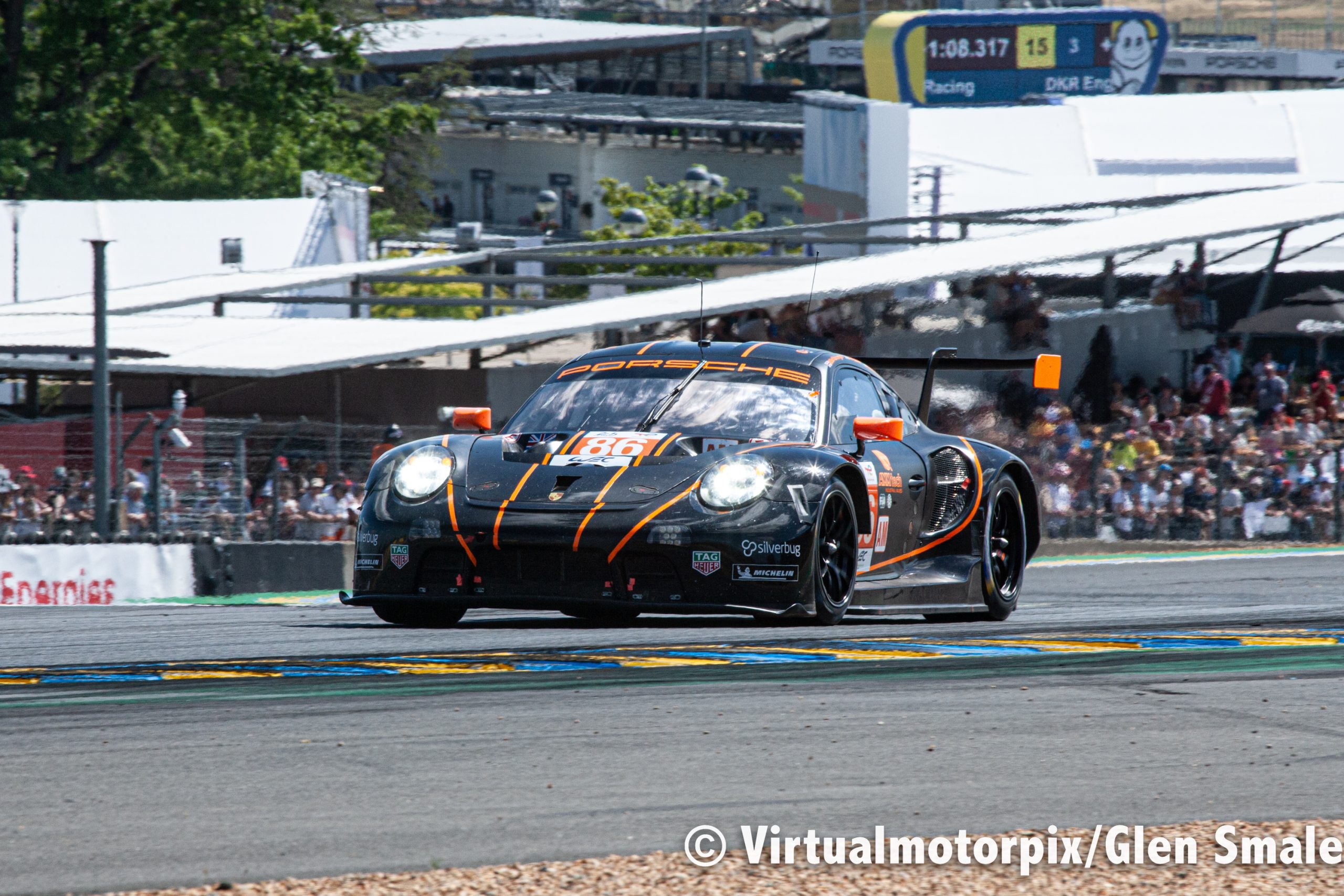
Through the night hours and into the breakfast period just three cars were retired, these included: the No. 59 Inception Racing Ferrari 488 GTE Evo; No. 71 Spirit of Race Ferrari 488 GTE Evo; No. 46 Team Project 1 Porsche 911 RSR-19. Interestingly it is only these three GTE Am cars that were retired, all the entries in the other three classes were still all running. That is a remarkably low rate of attrition, but with seven and a half hours to go, anything was still possible. It would appear that even the Toyotas at this stage were beginning to drive slightly conservatively, the No. 8 car leading the No. 7 car, with the No. 709 Glickenhaus in third overall. The No. 38 JOTA LMP2 car which had led from early in the race, was still holding station.
In the GTE classes, there was a real change of fortunes with the No. 64 Corvette leading the Pro class and the No. 51 AF Corse Ferrari in second, with the No. 92 Porsche in third. Unfortunately for the No. 91 Porsche, a flat spot caused the tyre to shred to pieces destroying much of the front bodywork and ancillaries, and necessitating a long, slow trip back to the pits for some extensive repair. The No. 75 green GTE Am Ferrari suffered a similar problem at the same place, and also needed some major repairs.
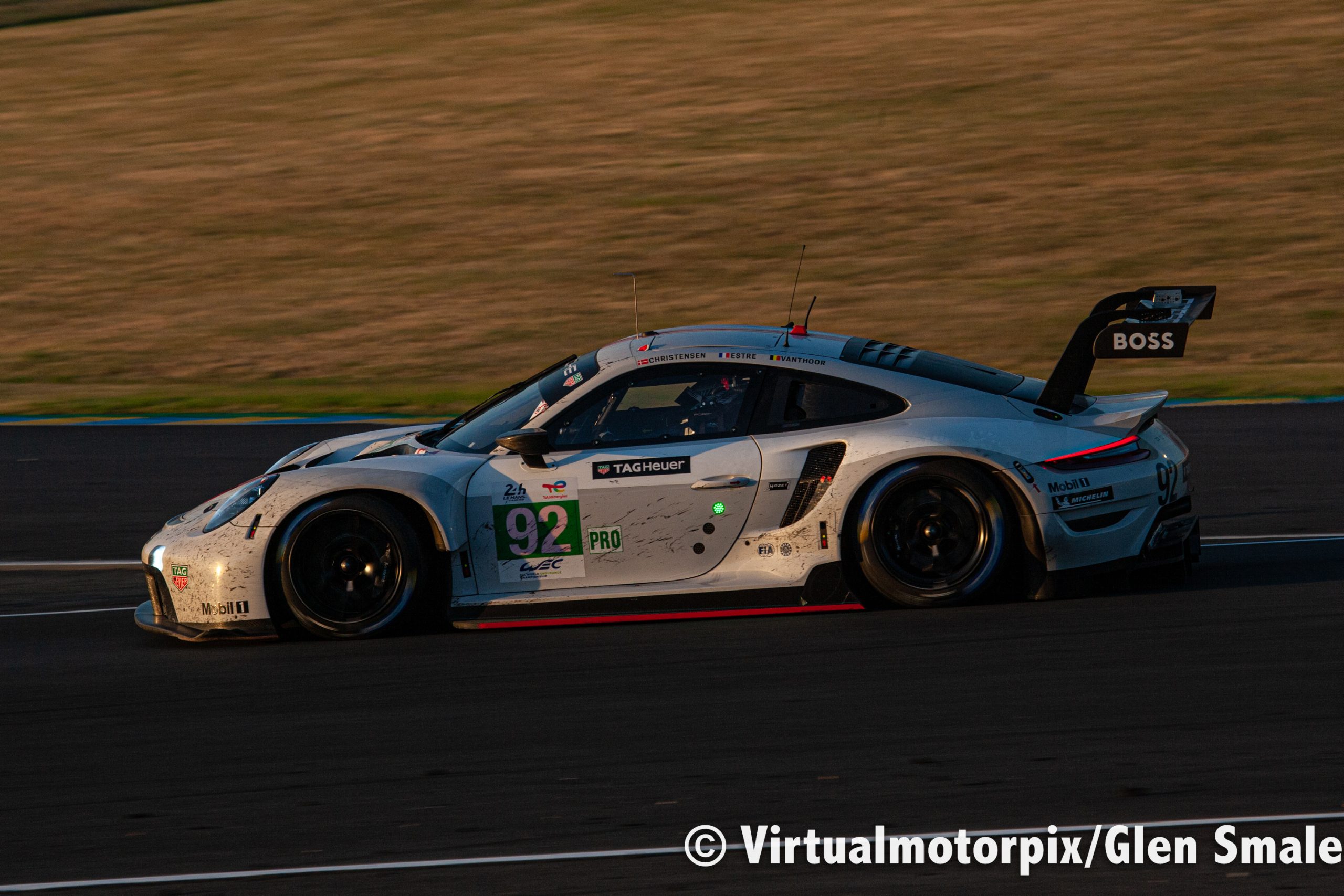
By Sunday mid-morning, the weather prospects for the rest of the race was for more of the same that we experienced the day before, perhaps even slightly warmer so there was little to no chance of any rain. Ricardo Pera driving the No. 86 GR Racing Porsche 911 RSR-19 slid on at the Indianapolis Corner but fortunately avoided a big impact with the tyre wall – he had been in seventh place in the GTE Am class at the time. Just minutes later it was the turn of the No. 36 Alpine that left the track at the start of the Porsche Curves, an event brought about by a combination of an overtaking attempt and hitting a slight bump right on the curve. This combination of events threw the car heavily into the tyre wall, but Matthieu Vaxiviere was able to drive back to the pit garage, it was a really lucky escape.
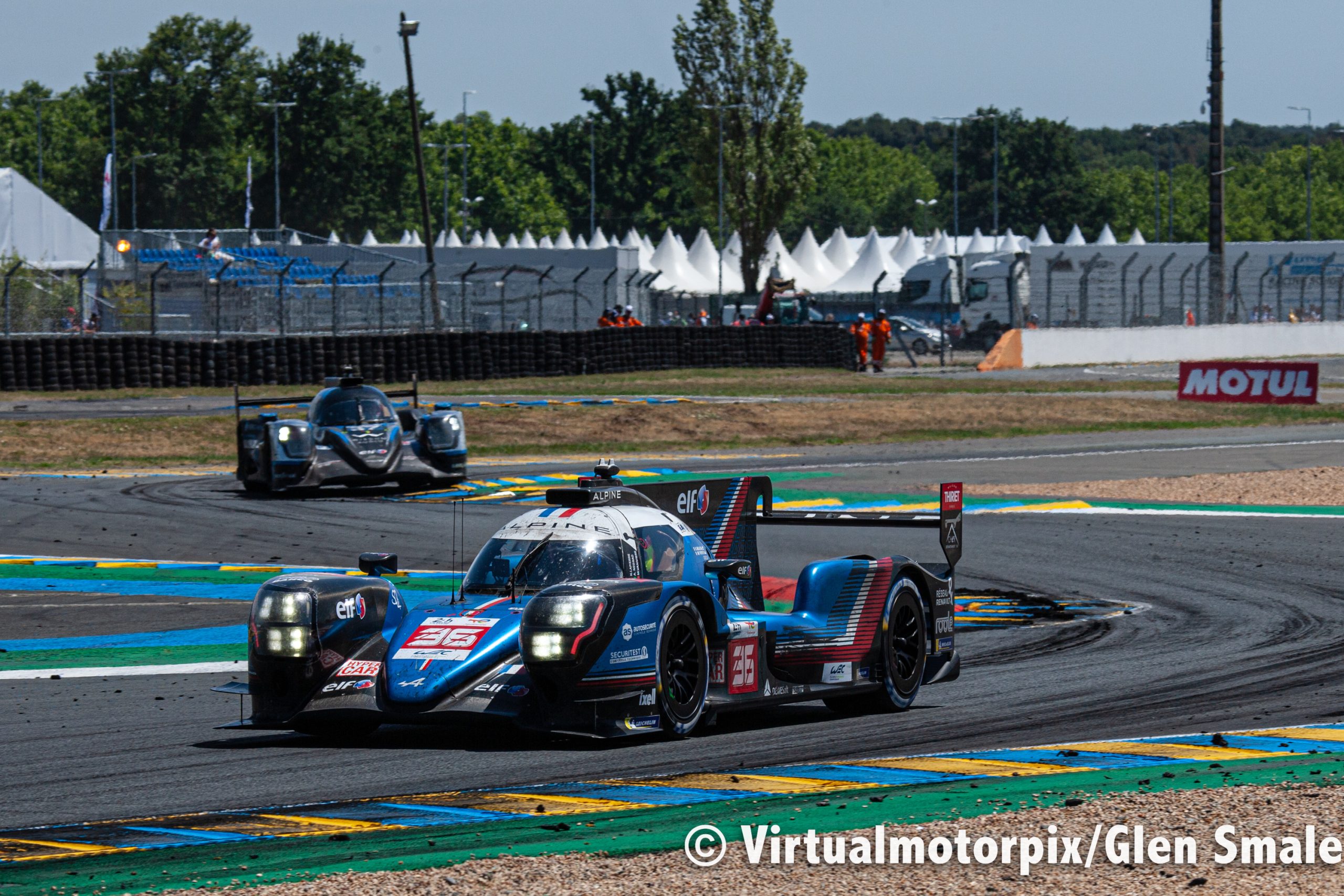
With less than seven hours to run, Porsche held six out of the top nine positions in the GTE Am class, while Ferraris occupied eighth position and then there is a solid wall of the Italian cars from tenth to 18th place in class. Another interesting fact is that Josh Pierson, just 16 years of age, became the youngest driver ever to start at the Le Mans 24 Hours.
Just before the stroke of 10h00, the GTE Pro class leading Ferrari was marginally ahead of the No. 64 Corvette which was challenging for the class lead. As these two headed down the Mulsanne Straight they were being caught by a pair of LMP2 cars who tried to make their way between the two GTE Pro cars. Details were still sketchy at the time of writing, but somehow one of the LMP2 cars made a small but sudden jink to the driver’s left, striking the No. 64 Corvette and causing it to impact heavily with the barrier, and becoming an instant wreck.
That incident closed the door on Corvette’s attempt at Le Mans for the year, as the No. 63 had just been officially withdrawn by the team literally a minute before this incident. The fall out of this was that the No. 51 Ferrari kept the lead in the GTE Pro class followed by the No. 91 Porsche and the No. 52 Ferrari.
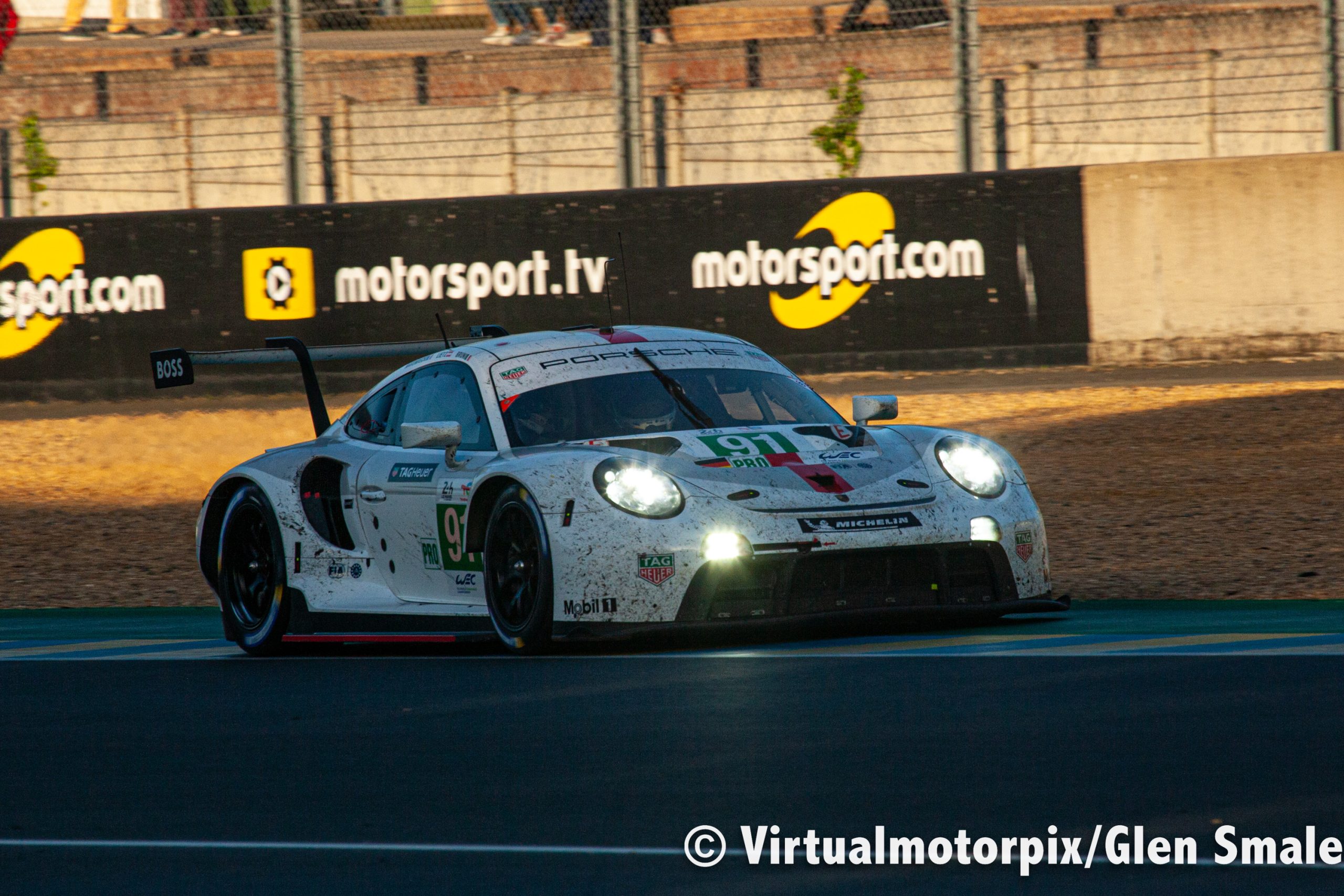
With 18 hours of the race run, apart from local yellow zones, there had still been no safety car or a full course yellow, and consequently the pace of the race was relentless. As hinted at earlier, the Toyotas were now doing 13 laps per stint which seemed to confirm that they were driving more conservatively. While the race pace had been intense, it was dampened by the number of local slow zones as a result of incidents around the track, causing the rate of laps to drop.
Towards the end, the biggest battle of the race came down to the No. 51 Ferrari and the No. 91 Porsche. The Porsche, it seemed, had the edge on straight line speed while the Ferrari was strong through the corners, which all added up to a fascinating tussle. As the 20-hour mark approached, the strengths of the different drivers comes through, and with the level of experience amongst the drivers here, the racing was anything but dull.
In the GTE Am class the positions were very changeable. For a long while the No. 79 WeatherTech Porsche held the lead in the Am class, but the Nos. 33 and 98 Aston Martins unsettled Porsche’s dominance in that class. But an interesting factor crept in at this late stage relating to the order of the drivers in the Am class, because if the better drivers had used up their time behind the wheel, then those teams only had their Silver and Bronze drivers left to drive. So, there were still a number of factors to play out that could have influenced the result of the race.
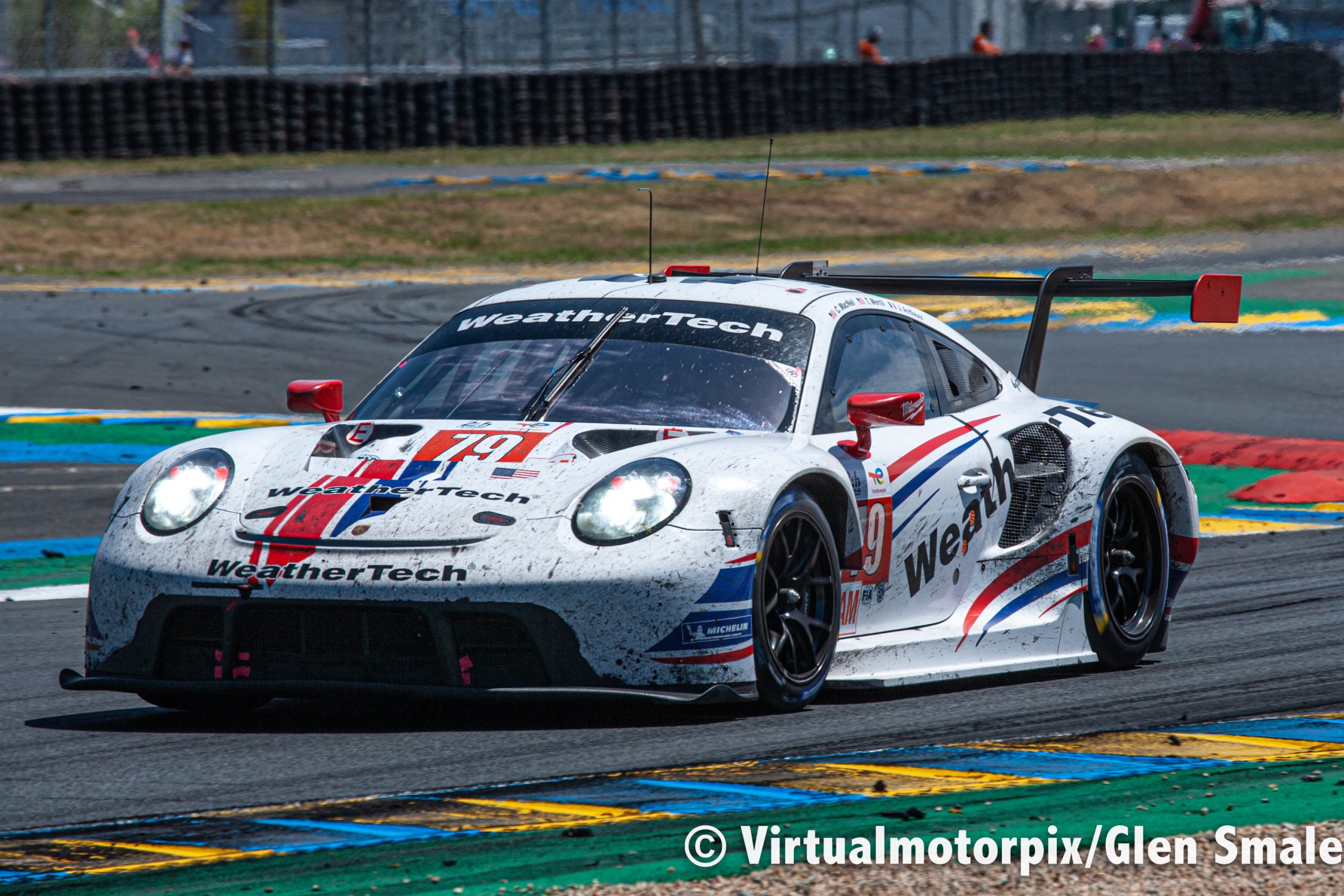
It is not unusual for the television crew not to focus on cars that are not creating a scene, and perhaps this was the reason why we hadn’t seen much of the Toyotas, because they were just circulating with the precision of a Swiss watch. It’s a sad fact, but the reality is that TV viewers like to see action and excitement, and so it was the closely fought duels and scraps that was given air time. Meanwhile, somewhat out of the limelight, leading the field was the pair of Toyotas, No. 8 followed by No. 7 with the No. 709 Glickenhaus looking like grabbing a podium place, which would be amazing for only the team’s second Le Mans outing. The No. 38 JOTA car was still leading the LMP2 class.
With less than two and a half hours left in the race, the No. 91 Porsche driven by Richard Lietz leads the GTE Pro class, but he had two Ferraris breathing down his neck. In the GTE Am class, the No. 33 Aston Martin led with three Porsches (Nos. 79, 77 and 99) in tow. No sooner had this been written, than the No. 77 Porsche came into the pits with a damaged front right suspension, a problem that dropped it out of a firm podium position and down to the bottom of the class, a really cruel state of affairs.
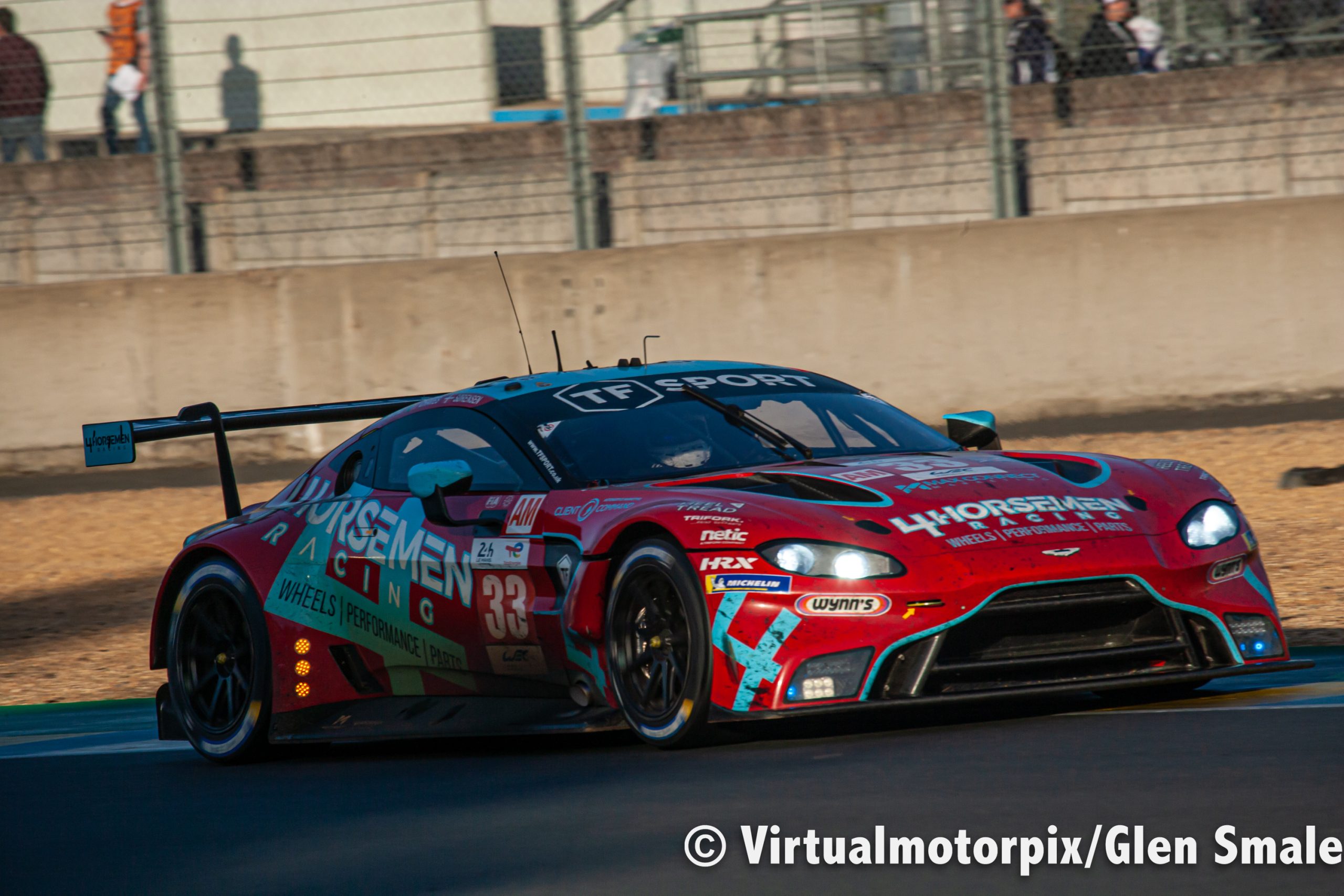
The final one and half hours was really just a procession, as barring a catastrophic mechanical failure, the Toyotas just had to keep it on the tarmac as they enjoyed a comfortable cushion back to the third placed car. In fact, looking back at the time sheets, the No. 8 Toyota held the lead right from the 16th hour through to the finish, with the No. 7 sister car finishing second. From as far back as the eighth hour, the No. 709 Glickenhaus held third position, a mighty effort for the young American team, albeit five laps behind the winners. The Glickenhaus sister car, No. 708 finished fourth, five laps further back.
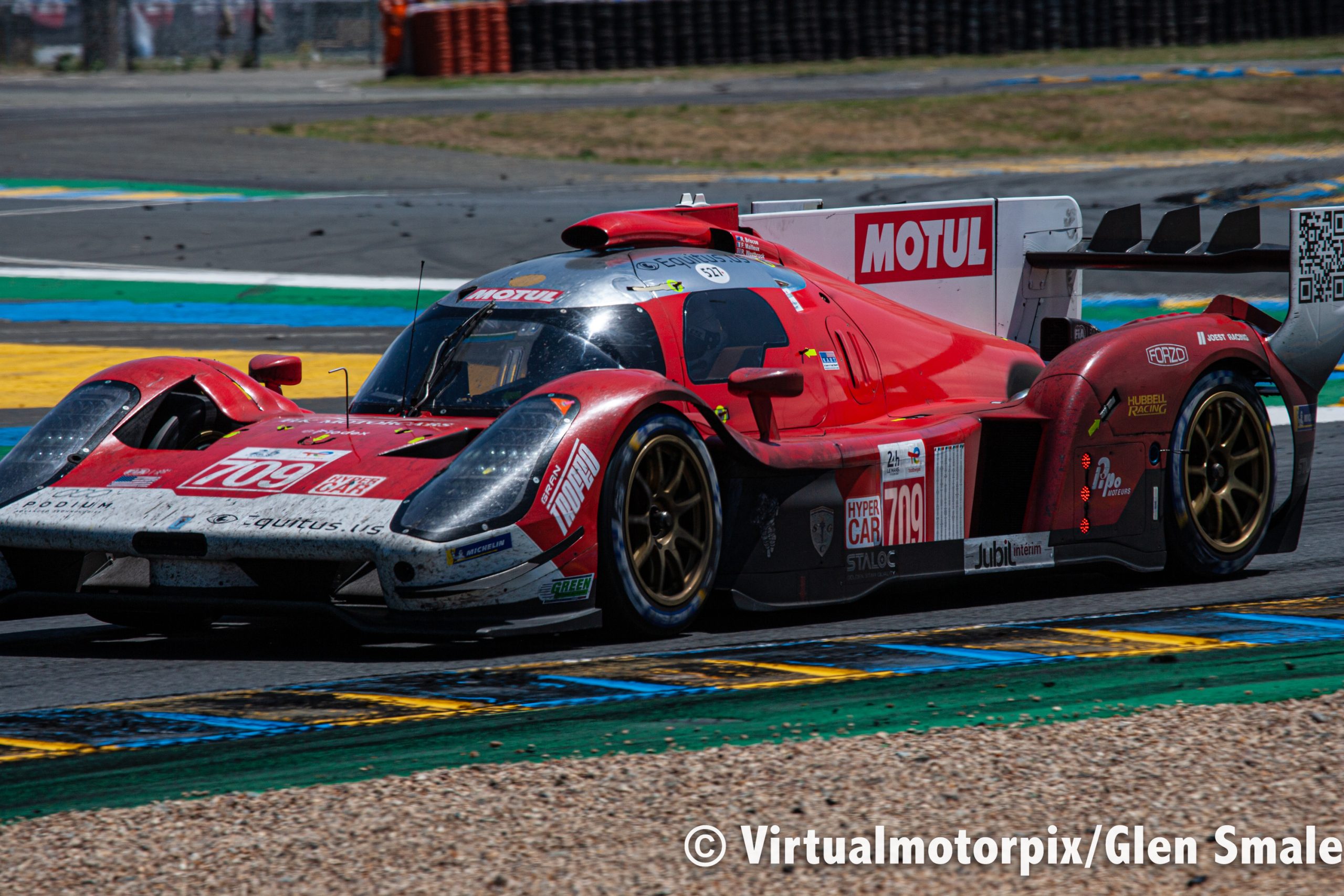
Remarkably, there were just eight retirees (DNFs) with one further non-classified (NC) car, an incredibly low rate of attrition. The No. 8 winning Toyota completed 380 laps at an average speed of 215.4 km/h, for a total distance of 5,177.17 km.
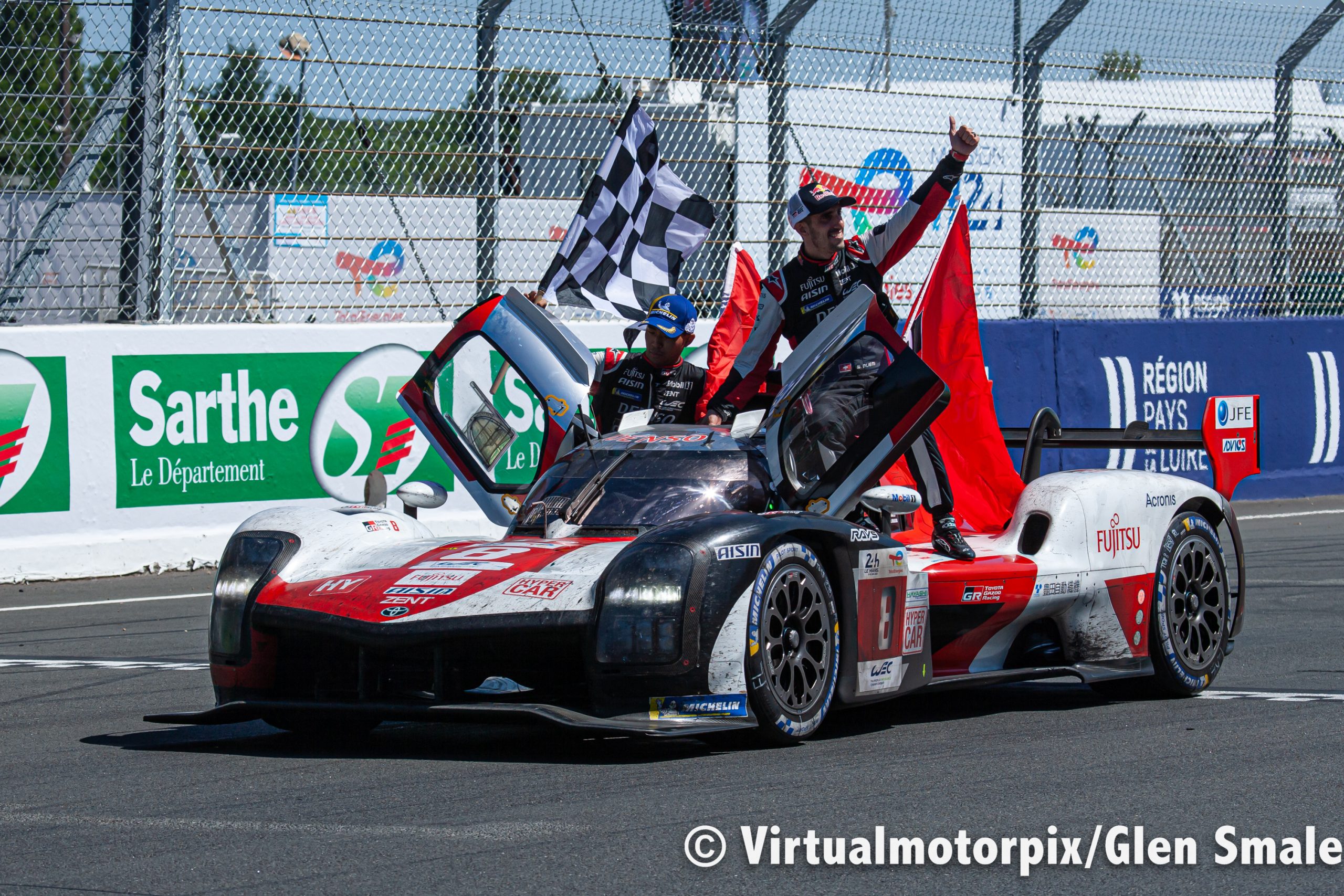
Looking Forward
Around 600 journalists and photographers (excluding TV) attended the 24 Hours of Le Mans this year, a marked difference from what we have experienced over the last two races. At next year’s race you can bet your bottom dollar that there will be a great celebration as the ACO recognises the 91st race and the 100th anniversary since the first race was held back in 1923. So you had better block out the weekend of 10-11 June 2023, and get your tickets booked as soon as possible!



